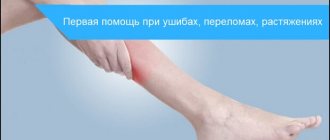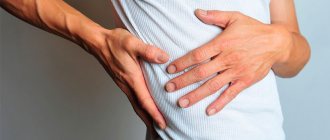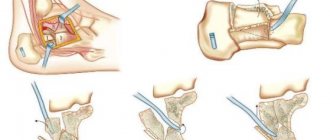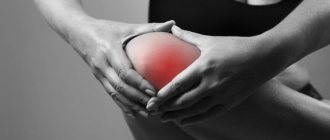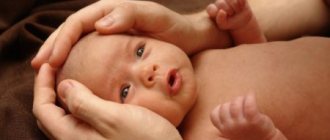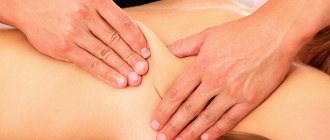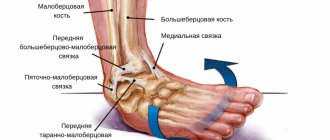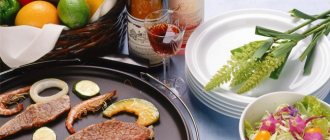In addition to aesthetic discomfort, hematomas are characterized by pain and worsen the quality of life. That is why there is a desire to get rid of them as quickly as possible, and not wait several days for the bruise to resolve naturally. A properly chosen anti-bruise ointment will help remove the hematoma in a short time.
Objectives and types of drugs
Today, you can buy ointment for bruises with different pharmacological effects. But at the same time, all funds are aimed at solving the following problems:
- Dissolution of blood clots in the damaged area.
- Relieving swelling and inflammation.
- Reducing pain.
- Restoration of damaged tissues.
Ointments for bruises can be classified according to their effects as follows:
- Nonsteroidal anti-inflammatory drugs. When used, pain is reduced, swelling is relieved and inflammation is stopped.
- Decongestant and absorbable. With them, it is possible to slow down the development of edema and reduce pain by relaxing the smooth muscles of the blood vessels. In addition, the products help restore venous circulation.
- Cooling. They contain substances that irritate the nerve endings in the damaged area, resulting in a local analgesic effect. Also, such drugs increase blood flow and have anti-inflammatory properties. Against this background, metabolic processes intensify, which accelerates the restoration of damaged tissues.
Manufacturers also produce combination drugs that have the ability to have all of the above effects. This allows you to relieve pain and stop inflammation, which allows you to remove bruises in the shortest possible time.
Symptoms and consequences of bruises
The most characteristic symptoms of a bruise are pain, swelling and bruising. The intensity of their manifestation depends on the degree of damage to soft tissues as a result of injury. They range from minor scrapes to bruising and swelling that can cover a large area of a limb, such as the thigh, calf or forearm.
A bruise - or more correctly, a hematoma - is an accumulation of blood at the site of a bruise caused by damage to the blood vessels, which manifests itself 2-3 days after the injury. Over time, the bruise changes color from blue to black or yellow, this is due to the processes of breakdown of blood elements. Edema or swelling at the site of injury occurs due to hemorrhage and the development of an inflammatory reaction. The stronger the hematoma and swelling, the stronger the pain. This occurs due to stretching of soft tissues and compression of nerve endings.
Heparin ointment
An effective remedy for bruises is heparin ointment. When using it, it is possible to remove the hematoma in the shortest possible time. The product is produced on the basis of petroleum jelly, which guarantees ease of application to the damaged area of the skin.
The active ingredient in the drug is sodium heparin. The substance belongs to the group of anticoagulants. It improves blood microcirculation in damaged tissues and promotes the resorption of hematomas. In addition, sodium heparin has anti-edematous and anti-inflammatory effects.
Other active ingredients in the ointment:
- Benzocaine. It belongs to the group of anesthetics and provides the product with analgesic properties.
- Benzyl nicotinate. This is an extract of nicotinic acid. The component improves the penetration of heparin deep into the skin.
Heparin ointment is recommended to be applied 2-4 times a day in a thin layer to the damaged area if there are no open wounds or scratches. Duration of treatment is up to 5 days. Heparin ointment is approved for use in children from 12 months.
Ointment for bruises and injuries: “Apizartron”
"Apizartron" contains bee venom and auxiliary components. It has a pronounced analgesic effect, helps with sprains and bruises. Used to warm up muscles, including during sports activities. Stimulates blood circulation, eliminates symptoms of neuritis and sciatica, as well as rheumatic joint pathologies.
You can buy the ointment at the pharmacy without presenting a prescription. It can be used by both adults and children over 12 years of age (over 6 - with caution). It is not allowed to use during any trimester of pregnancy and during breastfeeding.
If you have an individual intolerance to bee venom, a number of allergic reactions may occur, including redness, swelling, itching and rash. In these cases, it is necessary to replace the drug.
Products based on comfrey and badyagi
Preparations based on hematomas based on comfrey root and freshwater sponge badyagi have good resorption properties. Such products are presented by manufacturers in a huge variety. You can buy them at the pharmacy at an affordable price.
The effectiveness of comfrey root, which is also known as larkspur, against bruises has long been known. The plant was dried and crushed, and after that infusions were prepared, which were applied to bruises in the form of compresses. Ointments, gels and balms based on larkspur are presented in pharmacies in a wide range of multi-component formulations. Any remedy for bruises can quickly reduce swelling. The drugs have an analgesic effect and promote tissue restoration. Their peculiarity is the absence of contraindications.
The skeleton of the freshwater sponge badyaga consists of silicon oxide. The product is crushed and a powder is obtained, consisting of microscopic needles of silicon oxide. It is the basis of an ointment, which, when applied to damaged skin, has a local irritating effect. This allows you to increase blood circulation and speed up the processes of healing and tissue regeneration. When using it, it is important to exclude individual intolerance to the active substance.
Mani based on comfrey and badyagi is applied to damaged areas 3-4 times a day. It is not recommended to use the products during pregnancy and lactation, as well as before reaching the age of 12 years.
Remedies for bruises
Popular and inexpensive pharmaceutical products that will relieve pain and reduce inflammation. Buy them in all LekOptTorg pharmacies and on the website:
- . Used for pain relief in inflammatory diseases of the musculoskeletal system. Tablets are contraindicated in the 3rd trimester of pregnancy. Diclofen is used with extreme caution for diseases of the liver, kidneys, asthma, heart failure, and also in old age. The maximum dose of 150 mg should not be used for more than 5–7 days. For detailed instructions for use, please see the product card on our website.
- . Helps relieve pain and reduce fever (temperature). It is used for traumatic inflammation of the musculoskeletal system and soft tissues. Do not take during pregnancy or breastfeeding. For detailed instructions for use, please see the product card on our website.
- . Unlike other drugs, it does not relieve inflammation, but only relieves pain. But most often, paracetamol is in every first aid kit. Tablets are not recommended to be taken on an empty stomach, as well as in case of liver and kidney failure. Detailed instructions for use can be found on our website in the product card.
Using ointments for bruises
It is important that if there is a bruise or a hematoma, try to apply ice or a heating pad with cold water to the damaged area. This will prevent the development of severe swelling. Only after this is it recommended to use anti-bruise products.
On the first day after injury, it is better to use ointments containing heparin. The drugs increase the speed of blood flow, thin the blood and prevent the expansion of the hematoma.
If there is pain, you can apply an ointment containing non-steroidal anti-inflammatory drugs to the damaged area. The most well-known drugs are diclofenac and ibuprofen. They can be applied to the damaged area a couple of hours after injury.
In the future, to speed up the resorption of the bruise, you need to use ointments based on badyagi or comfrey. You can also use other ointments with a warming effect to increase blood circulation. They often contain snake and bee venom.
With proper and timely treatment of bruises, the occurrence of large hematomas can be prevented. But if bruises do appear, it is necessary to use special ointments to speed up their resorption and tissue restoration. When you cannot get rid of hematomas on your own, and the bruises increase in size, you should urgently consult a doctor.
What to do if you get hurt. First aid
- Don't panic under any circumstances. Try to move less, but rather sit or lie down.
- If the skin is damaged, it must be treated with disinfectants. They will not speed up wound healing, but will destroy microbes that slow down tissue regeneration. For these purposes, hydrogen peroxide, chlorhexidine digluconate, and an aqueous solution of furatsilin are suitable. All these products are inexpensive, you can buy them at any pharmacy and always keep them in your medicine cabinet. Important: alcohol-containing products - iodine solution, brilliant green, pure alcohol - cannot be applied to an open wound, only along its edges. If you apply it, you will get a burn.
- Then you need to apply a cold compress. Make it from ice or any product from the freezer. We recommend wrapping the ice in thick cloth. It is important to do this to prevent frostbite. You can also apply a cloth soaked in cold water or a bottle of milk from the refrigerator. Thanks to the cold, the damage to the blood vessels will decrease, the bleeding will stop, the pain will become less severe, and the hematoma will not grow. Keep the cold for about 20 minutes, after an hour you can repeat the procedure.
- If the bruise is severe, it is better to consult a doctor. Especially if you hurt your head.
Elimination of the consequences of a severe bruise
Sometimes diagnostics after a rib injury can reveal a fracture, fissure, or the development of hemopneumothorax.
- As a result of a fracture, the pleura and lung can be damaged. In case of prolonged swelling, a puncture is used to remove fluid (for hemothorax) or air (for pneumothorax) from the pleural cavity. If this is hampered by clotted blood in the area of the hematoma, then surgical intervention is performed to eliminate such accumulations.
- If a crack is detected, a pressure bandage is not applied, but other standard treatment methods are used. For example, physiotherapeutic procedures (UHF, electrophoresis, Sollux, dry heat). It is important to ensure that there is no bleeding into the chest.
- Pneumonia can occur after an infection enters the lung, if the bruise leads to prolonged inflammation. In this case, antibiotics are used.
First aid
At the first symptoms of an ankle sprain, the leg should be immobilized and elevated. Apply crushed ice in a towel or a cold heating pad to the swelling for no more than 15 minutes several times a day, otherwise the effect will be the opposite. To avoid further trauma, the joint is stabilized with an elastic bandage or neoprene bandage, orthosis, or taping.
Orthopedic surgeon Eduard Viktorovich Zhezherya comments:
In the first week, with grade 1 and 2 sprains, active loads are excluded; thermal procedures and massage are avoided for 3 days. They will provoke hemorrhage and increase the size of the swelling.
Ointments with anti-inflammatory formulas
Along with cold, when a sprained ankle occurs, the acute condition is relieved with local remedies with different active ingredients:
- with propionic acid - Ibuporfen, Nurofen, Deep Relief;
- phenylacetic - Diclak, Ortofen, Voltaren, Diclovit;
- indolylacetic – Indovazin, Indomethacin-Acri;
- with ketaprofen - Fastum, Ketonal, Artrosilene;
- drugs from the oxicam group - Piroxicam - Final gel;
- analgesics - Nimesulide, Nise.
Due to the risk of side effects, ointments are not recommended for long-term use. To relieve pain and treat ankle sprains, painkillers in tablets, non-steroidal drugs are prescribed: Troxevasin, Nimesil, Ketanov, Diclofenac-akos, Movalis, Flexen. Medicines are effective for overexertion and acute conditions.
For chronic processes, corticosteroid injections are prescribed. They block the pain, but do not provide a complete cure. Long-term use reduces collagen production and tendon strength during stretching. Administration is justified only when used once every 2 weeks.
Decongestants
To improve tissue nutrition in the affected area, anticoagulants are prescribed.
- Troxevasin, with its angioprotective effect, reduces the area of edema and the risk of secondary lesions of soft tissue structures.
- Heparin ointment, after entering the systemic circulation, resolves hematomas, effectively relieves swelling when the ankle joint is sprained, and prevents the formation of blood clots at the site of vascular damage.
- Lyoton gel with a high concentration of heparin, in addition to all the listed actions, inhibits the catarrhal process.
Warming ointments for the treatment of ankle sprains
In the acute period, the use of locally irritating drugs is prohibited. They are recommended to be used after 3-4 days to accelerate local blood flow and metabolic processes.
- Capsicum with camphor and gum turpentine warms up and relieves pain for 12 hours.
- Apisatron with bee venom increases the elasticity of the ligamentous muscles.
- Comfrey with tannins, allantoin, vitamin E activates nerve endings and reduces pain.
Chondroprotectors for joints
To prevent the development of degenerative processes in the capsule, chondroprotectors are prescribed for inflammation. Due to the inclusion of mucopolysaccharide and chondroitin, the drugs give a good effect:
- relieve swelling;
- stimulate metabolic processes in bone tissue;
- restore elasticity to soft tissue structures;
- accelerate the production of protein structures, hyaluronic acid, proteoglycan, intra-articular fluid;
- relieve inflammation.
This group includes: Artra, Teraflex, Alflutol, Chondroguard, natural remedies - Mucosat and Toad Stone.
The best ointments: bruises, injuries, pain
Various ointments (usually warming ones), gels and creams are widely used in the complex of means for recovery after injuries and diseases of the musculoskeletal system. Their effect on tissue is determined by the properties of the ingredients they contain. Thus, some ointments cause sharp tissue hyperemia (finalgol, gymnastogal, efkamon, etc.), others relieve swelling and inflammation (lazonil, chirudoid, heparin, etc.).
Swelling and pain arising from injuries are a consequence of damage to small vessels, tissue hypoxia and increased capillary permeability. At the same time, blood circulation deteriorates (as a rule, blood flow and nutrition of tissues and, accordingly, their regeneration are disrupted). The use of ointments, gels and creams is aimed at analgesia (pain relief), reducing swelling and hematoma, tissue irritation, inflammation, accelerating resorption, improving microcirculation (blood flow), stimulating tissue regeneration (tissue growth).
In case of acute injury, highly irritating, hyperemic ointments are not indicated. It is recommended to use ointments that have an analgesic and anti-inflammatory effect (i.e., those that contain anesthetics, heparin, plant extracts, antirheumatic drugs, etc.). For fresh injuries, ointments are not rubbed in so as not to cause tissue hyperemia, but gels are used, which have better resorptive (absorption) ability and a cooling effect. During the rehabilitation stage after an injury, ointments and creams are prescribed that improve microcirculation in the tissues. For chronic diseases (buritis, tendovaginitis, etc.), anti-inflammatory drugs are used, which contain iodine and other ingredients.
— Apizartron contains bee venom apitoxin (in 1 g of ointment the venom of an annual bee), 10% methyl salicylate and 1% mustard essential oil. It is indicated for myositis, radiculitis, bruises, neuralgia, etc. Apply 2-3 g of ointment to the painful area and rub in after 1-2 minutes (when tingling or pinching occurs). Then a massage is given, which is repeated 2-3 times a day. Sensitivity to the drug may be increased, so massage with it should begin with a small dose (up to 1 g). If it is well tolerated, it is increased.
— Virapin contains 0.15 mg of bee venom per 1 g of ointment. It is used for bruises, radiculitis, arthritis, myositis and other diseases. Ointment in an amount of 2–5 g is applied to the affected area and massage is carried out for 5–10 minutes.
— Viprosal contains viper poison, camphor, salicylic acid, fir oil, paraffin, glycerin, petroleum jelly and is used for sciatica, radiculitis, myositis, etc. The ointment is applied to the painful area and a massage is performed.
— Vipratox contains venom from various snakes, methyl salicylate, camphor and a base for liniment. It is used for myositis, periarthritis, arthritis, damage to the ligamentous apparatus, bruises, etc. The ointment is applied to the painful area and massaged.
— Methyl salicylate has an analgesic and anti-inflammatory effect, used in pure form and in mixture with chloroform and fatty oils for radiculitis, myositis, lumbago, etc.
— Navtalgin is an analgesic emulsion, which includes: analgin, methyl salicylate and naftalan oil, emulsifier, a mixture of fatty acids of sperm whale oil, distilled water.
— Menthol ointment contains menthol, methyl salicylate and distilled water, yellow wax, anhydrous lanolin.
— Camphocin is a liquid containing salicylic acid, castor oil, purified trepentine oil (turpentine), methyl salicylate, camphor, pepper tincture.
- Capsitrin : tincture of capsicum, tincture of St. John's wort, green soap, ammonia solution - 20 percent, ethyl alcohol - 60 percent.
— liniment : capsicum tincture, green soap, distilled water, 96 percent ethyl alcohol, ammonia.
— Pepper-camphor liniment : tincture of capsicum and camphor alcohol.
— Navtalgin, Sanitas balm , Bom-Benge, menthol complex ointment, camphocin, capsitrin, compound-pepper and pepper-camphor liniments are used for rubbing painful areas with lumbago, neuralgia, myositis, radiculitis, bruises, etc.
— Tiger ointment contains clove oil, eucalyptus oil, camphor, menthol, paraffin, petroleum jelly. It is used for radiculitis, sciatica, migraine, neuralgia, myositis, lumbago, etc.
— Nicoflex is a sports cream that contains active substances: capsacin, ethyl nicotinate, ethyl glycol salicylate, lavender oil. It is used for bruises, muscle pain, cramps, etc. Apply 1-3 g of cream to the painful area and massage. If you have scars on the skin, this cream cannot be used.
— Gymnastogal includes: H-4, hydroxy-3-methoxy benzene-8-methyl-trans-b-nonylic acid amide, benzene ester of nicotinic acid, ointment base. The ointment is used for bruises, sprains of the ligamentous apparatus, lumbago, bronchitis (lubricate the chest), radiculitis, arthritis, myositis, etc. Apply 1-2 g of ointment to the painful area and massage. The ointment has a strong thermal effect. After the massage, hands should be washed with hot water.
— Heparin ointment quickly resolves infiltrates, swelling, and has a vasodilator and anti-inflammatory effect. It is used for thrombophlebitis, lymphostasis, varicose veins, infiltrates and other inflammatory processes. Squeeze out 3–5 cm of ointment from the tube, rub it in carefully or apply a bandage.
— Heparoid includes 6000 conventional units. units heparin in 30 g ointment. It is used for inflammatory processes, leg ulcers, venous edema, bruises, etc. Ointment is applied to the sore spot and secured with a bandage.
— Efkamo includes: camphor, clove oil, eucalyptus oil, menthol, methyl salicylic acid, etc. It has an analgesic effect. It is used for myositis, radiculitis, bruises, lumbago, etc. Apply 1–3 g of ointment to the painful area and massage.
— Reparil-gel contains horse chestnut, heparin, salicylic acids, which enhance the analgesic effect. It is quickly absorbed through the skin, has a cooling effect, relieves heaviness, swelling, reduces pain, has an anti-inflammatory and regenerative effect. It is used for inflammation of the veins, lymphostasis, edema, and inflammatory processes. A gel is applied to the injury site and secured with a bandage. In case of acute injury, this must be done several times during the day.
— Picaryl liniment contains chloroform, methyl salicylate, benzyl nicotine, etc. It is used for radiculitis, various injuries of the musculoskeletal system, myositis, lumbago, etc. 3–5 ml of linement is applied to the painful area and a massage is performed. Picaril should not be used for abrasions! — Reonevrol contains methyl salicylate, camphor and other components. It is used for sciatica, myositis, radiculitis, neuritis, etc. Ointment is applied to the painful area and massage is performed.
— Nikoven contains heparinoid, benzylnicotine and other active substances. It is used for venous enlargement of the veins, hematomas, bruises, sprains, etc. Ointment is applied to the painful area, then a massage is performed or a bandage is applied.
— Nikodan contains heparin and other active ingredients. It is used for rheumatism, muscle pain, chronic bronchitis, sprains of the ligamentous apparatus of the joints, etc. A little ointment is applied to the painful area (be sure to check the sensitivity of the skin to it), and then a massage is performed or a bandage is applied.
— The anesthetic liquid contains menthol, novocaine, anesthesin, and alcohol. It is used for radiculitis, myositis, sprains of the ligamentous apparatus of joints, bruises, etc. Apply a little liquid to the painful area and rub it in.
— Finalgon contains 2.5% nicotinic acid butoxyethyl ester and 0.4% vanillyl amide. It is used for sprains of muscles and ligamentous apparatus of joints, radiculitis, myositis, lumbago, intercostal neuralgia, bronchitis, etc. A small amount of ointment is applied to the painful area and lightly rubbed in (you can also do a massage). The ointment should not come into contact with abrasions and mucous membranes. After the massage, hands should be washed with hot water and soap.
— Venoruton-gel is used for acute injuries, bruises, thrombophlebitis, edema, etc. Contains active herbal ingredients and alcohol. It has an analgesic effect, relieves the feeling of muscle tension, and has a cooling effect. The gel is applied to the injured area several times during the day and secured with a bandage. Thermal procedures should not be used!
— Pulmotin contains camphor, thymol and other components. Used for bronchitis, flu, colds and lung diseases. A small amount of ointment is applied to the chest, then massage is performed (2–3 times a day).
— Elacur ointment , which includes capsacin, methyl salicylate, propyl nicotinate and other components. It has an antirheumatic effect and causes skin hyperemia after a massage. It is used for myositis, lumbago, sciatica, arthritis, myogelosis. Ointment is applied to the sore spot and massage is performed.
— Capsoderm is an ointment that contains capsacin, camphor and other components. Causes severe hyperemia. It is used for myositis, lumbago, sciatica, rheumatoid arthritis, muscle pain, buritis, sprains, etc. A little ointment is applied to the painful area and a massage is performed. Do not use if you have scars on the skin!
— Lidocaine contains lidocaine and other components. Used for bruises, sprains, lumbago, myositis. Apply ointment to the painful area and rub in. In case of acute injury, this must be done several times during the day.
— Hemorid contains adrenaline, camphor, menthol, prokin and other active ingredients. Used for hemorrhoids.
— Neo-capsiderm includes camphor, various oils and other active ingredients. Used for damage to the ligamentous apparatus of the joints, bruises, lumbago, myositis, etc. The ointment is applied to the painful area and massaged.
— Richtofit-sport includes medicinal plants, oils and other ingredients. Massage with this cream promotes muscle relaxation, skin regeneration, and accelerates the healing process of minor injuries and inflammations. It is used for myositis, myalgia, muscle cramps, bruises, sprains, etc. The cream is applied to the painful area and rubbed.
— Mellivenone contains chloroform, bee venom and other ingredients. It is used for muscle pain, periarthritis, lumbago, myositis, osteochondrosis, various arthritis, buritis, etc. A little ointment is applied to the painful area (as it causes strong heating and tissue hyperemia) and a massage is performed. It is necessary to avoid getting the ointment on mucous membranes and abrasions! After the massage, you should wash your hands with hot water and soap. Ultrasound is used with mel-livenone.
— Perclusone contains clofezone and clofexamide hydrochloride. Has an analgesic effect. It is used for phlebitis, thrombophlebitis, bruises, sprains, lumbago, etc. The ointment is applied to the painful area and fixed with a bandage or massage.
— Myoton contains medicinal plants, oils and other ingredients. It has an analgesic, anti-inflammatory effect, increases blood flow in massaged tissues, relieves muscle fatigue, etc. There are several types of this cream. Myoton-A is used after training sessions, has a hyperemic (warming) effect, relaxes muscles. During a restorative massage, the cream is rubbed into the muscles. Myoton-B and myoton-C are used before a training session or competition. They have a warming effect and are used for injuries to muscles, tendons, various inflammatory processes, etc. It is necessary to avoid getting these creams on the mucous membranes!
— Raymon-gel contains active ingredients: etafenamit, flufenamic acid, etc. It is used for muscle pain of a rheumatic nature, lumbago. periarthritis, sciatica, bruises, sprains, etc. A gel is applied to the injured (painful) area and secured with a bandage.
— Troxevasin gel contains active substances, has anti-inflammatory and analgesic effects, and ensures rapid resorption. It is used for swelling, pain caused by venous insufficiency, post-traumatic syndrome, etc. The gel is applied to the damaged area and secured with a bandage.
Symptoms of a sprained ankle
Injuries of 1st and 2nd degrees are partial micro and macro ruptures of soft tissue structures.
When severely affected, they tear off the bone, causing the leg to completely lose functionality. When an ankle sprain occurs, pain of varying intensity occurs, regardless of the degree. Due to the high permeability of blood vessels and pressure on the capillaries, swelling forms and pain increases. If the ankle is sprained, damage to the walls of large vessels occurs, a hematoma appears with blood filling, and the skin becomes blue-purple. If measures are not taken, an inflammatory process develops - ligamentitis, which affects the tendons. The patient may hear sounds similar to clicks when moving or moving his fingers, caused by loss of integrity of the annular ligament.
Orthopedic surgeon Andrey Yurievich Sidenkov comments:
Sprained ligaments extremely limit the range of rotation and mobility. At grades 2 and 3, it is almost impossible to step on your foot. With complete separation of solid tissue structures, abnormal joint activity is observed.
Why it is not recommended to treat a hematoma on the leg at home
If there is large accumulation of blood under the skin, it must be removed. There are enough videos and articles on the Internet describing this procedure at home, but you absolutely cannot follow such advice. Firstly, a person risks damaging his leg even more and disrupting its normal functioning, even to the point of disability. Secondly, and more likely, you can introduce an infection into the body and provoke even greater inflammation. Thirdly, only an experienced doctor using special equipment will do this carefully, but independent attempts can permanently disfigure the skin and leave unaesthetic scars on it.
